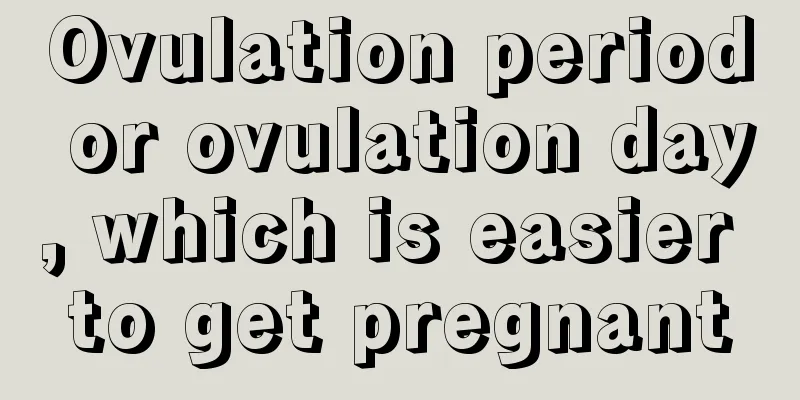Ovulation period or ovulation day, which is easier to get pregnant

|
The ovulation period and ovulation day will increase the chance of pregnancy. During this period, the couple can have sexual intercourse, but do not have too much psychological burden during sex. Only by letting nature take its course can you more easily conceive successfully. It is also necessary to ensure that the bodies of both husband and wife are in a healthy state. Problems with either party will make conception somewhat unsuccessful. Under normal menstruation conditions, a woman's ovulation period is counted from the first day of the next menstruation to the 14th day as the ovulation day. The 5 days before and 4 days after the ovulation day add up to the ovulation period. Fertilization is easy at this stage. It mainly discharges secondary oocytes, i.e. egg cells. After this secondary oocyte enters the fallopian tube, it undergoes the second meiotic division in the fallopian tube. This division occurs after fertilization, after the sperm nucleus enters the secondary oocyte. As a result of the division, a large effective cell, the egg cell, and a polar body that cannot be fertilized are produced. Generally, a woman's body temperature will suddenly drop when ovulation day comes, then soar again the next day, and then continue for a high temperature stage. Some women will also experience lower abdominal pain when ovulation day comes. 1. Find out the ovulation day through the contraceptive eugenics test mirror Every morning, use the tip of your tongue to drop a drop of saliva onto the lens and let it air dry or dry under a lamp. If you see a "fern-like" image, it is the ovulation day. This typical image will only appear during the ovulation period. This detection method is simple, convenient and easy to master. The test results are accurate and rapid. It is a good assistant in grasping the best opportunity for conception. 2. Find out the ovulation date through the menstrual cycle The menstrual cycle calculation method is only applicable to women whose menstrual cycles have always been regular. The method is to count from the first day of menstruation, and count down 14 (± 2) days to get the ovulation period. For example, if the menstrual cycle is 28 days, the first day of menstruation is on the 28th of this month. Then the 1st, 2nd, 13th, 14th, 15th and 16th of this month are the ovulation days. Women usually experience lower abdominal pain and breast tenderness during these days. 3. Find out the ovulation day through changes in cervical mucus Women usually have very little vaginal discharge just after their period. It appears thick and sticky. In the middle of the menstrual period, that is, 1-2 days before ovulation, the vagina becomes more and more moist, and the secretions not only increase, but also become clear and transparent like egg white. You can pull out very long threads by touching them with your fingertips. The appearance of such leucorrhea indicates that ovulation is imminent, and it usually lasts for 3-5 days. From then on, vaginal secretions will gradually decrease and become thick and viscous again, and can no longer be drawn into threads. |
<<: What medicine can delay menstruation?
>>: Reference table of normal progesterone values at five weeks
Recommend
What causes uterine fibroids to grow after menopause?
Some women experience enlarged uterine fibroids a...
Can drinking celery juice lower blood pressure in pregnant women?
For pregnant women, daily care is very important....
Can pregnant women eat lactulose?
Lactulose is a drug that has a good effect in rel...
Why does bleeding start again after the menstrual period is over after the abortion?
Abortion is extremely harmful to women's bodi...
Is menstruation a detoxification for girls?
Many girls will find that they have their periods...
What disease may cause vaginal bleeding?
In addition to menstruation, vaginal bleeding als...
Why is internal examination so painful?
Internal examination is also a frequently used te...
How many days does a woman usually ovulate?
We know that eggs play a very important role for ...
Will irregular menstruation cause infertility?
Many women will experience some abnormal situatio...
What are the symptoms of uterine fibroids
What are the symptoms of uterine fibroids? Uterin...
Is the smoke from moxibustion harmful to pregnant women?
Pregnant women should not smell anything during p...
What should I do if my period is delayed for 3 days?
In life, there are always some women whose menstr...
What to do if your pubic hair itches after shaving
The presence of pubic hair can resist bacterial i...
Yellow face during pregnancy means boy
According to surveys and analyses, women's co...
Do you feel pregnant for a day or two?
If a man and a woman have unprotected sex, they m...









